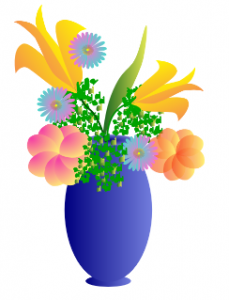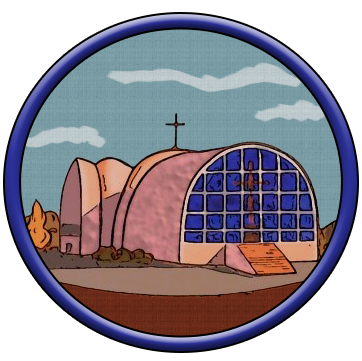The Dormition of the Mother of God
August 15
Great devotion to the Most Holy Mother of God left a mark on our Liturgical Year. The year opens with the Nativity of the Mother of God on September 8th, and the last of the 12 great feasts of the church year, the Dormition of the Mother of God, culminates the cycle of feasts. The faithful always prepared themselves for the great feasts with fasting and prayer. Therefore, the Feast of the Dormition is preceded by a 2 weeklong fast. See Spasiwka – Fast of the Theotokos.
The Feast of the Dormition reveals God’s ultimate plan for mankind: that having completed this earthly life, the faithful shall be resurrected in body and soul and united with Christ for all eternity. Thus, this Feast is a feast of hope, hope in Resurrection and life eternal. It is the celebration of the fact that all men are “highly exalted” in the blessedness of the victorious Christ, and that this high exaltation has already been accomplished in Mary the Theotokos.
The Feast of the Dormition is the sign, the guarantee, and the celebration that Mary’s fate is the destiny of all of those whose lives are totally dedicated to hearing and keeping the Word of God. What happened to Mary will happen to all who imitate her holy life of humility, obedience, and love. All will have Christ born in them by the Holy Spirit. All will become temples of the living God. All will share in the eternal life of His Kingdom.
So let this feast be a time of both the joyful praise of Our Lady and of all God has done in her and through her for us; but this should also be a time of reflection on just what is our relationship with God: to what extent are we willing to give ourselves over to that participation in his life, allowing Him to take over our lives, and make something new out of us? St. Paul said, “He will transform these lowly bodies of ours, and make them like his glorious Body.” That’s what He did for the Mother of God; that’s what He wants to do for us. But it’s not automatic; we don’t line up in single file at the last day and receive our glorious bodies like ticket stubs at a movie theater—“here’s yours; ‘Admit One’.” No; there’s something that has to be real, a change in us, so that God can recognize Himself in us and say, “You belong to Me. My Spirit is in you, and I see that you are changed that you have surrendered yourself to Me,” as Our Lady did.
Everything has been accomplished in her, and we, as her children, are on this pilgrimage on our way to that glory, step by step through that ascetical, sacramental, and mystical life of the Church, of our vocation, our interior relationship with God. Our lives should move in that direction of communion, of participation, of letting Christ live in us, so that we will come one day to the gates of Heaven, to that glorious kingdom where the Mother of God and all the righteous will be standing, transformed, in this eternal, loving, living communion with God forever—which is his will for us from the very beginning.
 According to an old custom, flowers and medicinal herbs are blessed after the Divine Liturgy on the Feast of the Dormition. According to traditional belief, after Mary’s assumption, her tomb was filled with a “heavenly fragrance” and flowers. The herbs, used as natural medicine, are blessed in commemoration of the numerous healing and extraordinary graces bestowed on the pilgrims at Mary’s tomb.
According to an old custom, flowers and medicinal herbs are blessed after the Divine Liturgy on the Feast of the Dormition. According to traditional belief, after Mary’s assumption, her tomb was filled with a “heavenly fragrance” and flowers. The herbs, used as natural medicine, are blessed in commemoration of the numerous healing and extraordinary graces bestowed on the pilgrims at Mary’s tomb.
THE ICON
- The Mother of God is lying on her deathbed in the midst of the apostles.
- The moment of bodily assumption is shown at the top of the icon where the Mother of God is seated on a throne in the “mandorla” the angels are carrying towards heaven.
- The icon has two axes which form a cross. The horizontal axis is the body of Mary. Christ, standing, is the vertical axis, which indicates his triumph over death.
- Christ is surrounded by a “mandorla”. He is holding in His arms a small figure of a child clothed in white and crowned with a halo: the “all-luminous soul” that He has just gathered up.
- Christ in glory is receiving in His arms the soul of His Mother.
- The multitude of angels present at the Dormition forms an outer border around the “mandorla” of Christ.
- At the top, in the sky, the moment of the miraculous arrival of the apostles, assembled from the ends of the earth, is shown.
- The 12 apostles are standing around the bed in deep sorrow.
- The apostles assembled represent the total consensus of the Church about the veneration which the Church renders to the Mother of God. The Church as always celebrated and venerated the resurrection and assumption in glory of the Mother of God.
- Two bishops with halos stand behind the apostles: St. James, the first bishop of Jerusalem and Timothy.
- The women represent the faithful of Jerusalem, who, with the bishops and the apostles, form the inner circle of the Church in which the mystery of the Dormition takes place.
Adapted with appreciation from:
Orthodox Church in America at Dormition-of-the-theotokos
UCREC Saskatoon
Excerpts from The Dormition of Our Most Holy Lady, the Mother of God and Ever Virgin Mary,Holy Trinity Monastery, 1976; translated from the Menology of St. Dimitry of Rostov.
